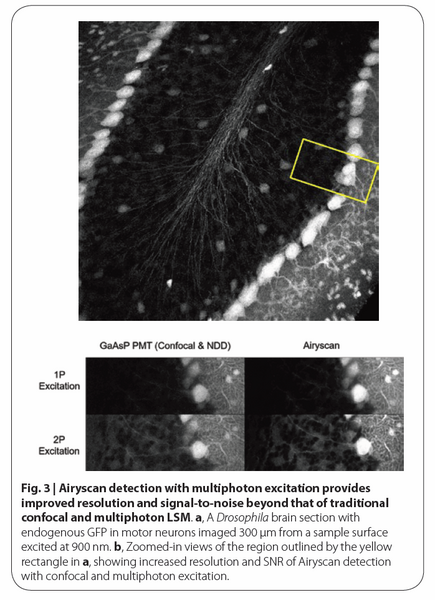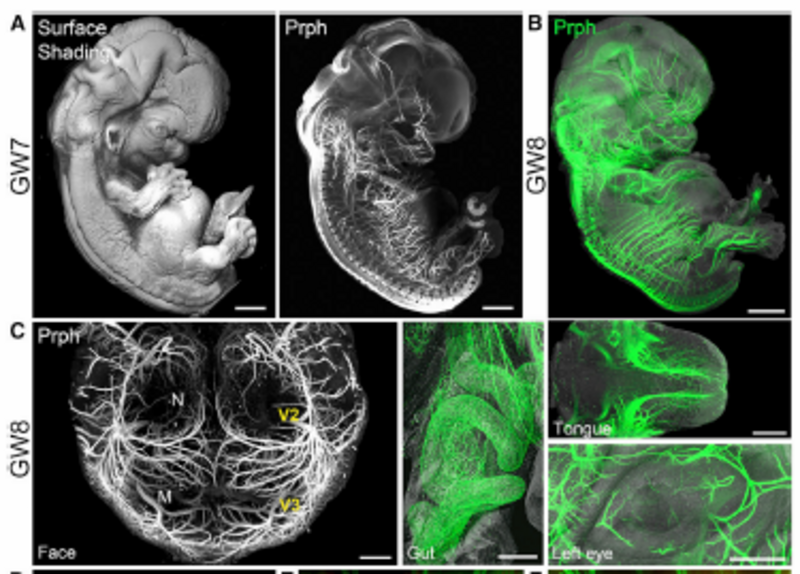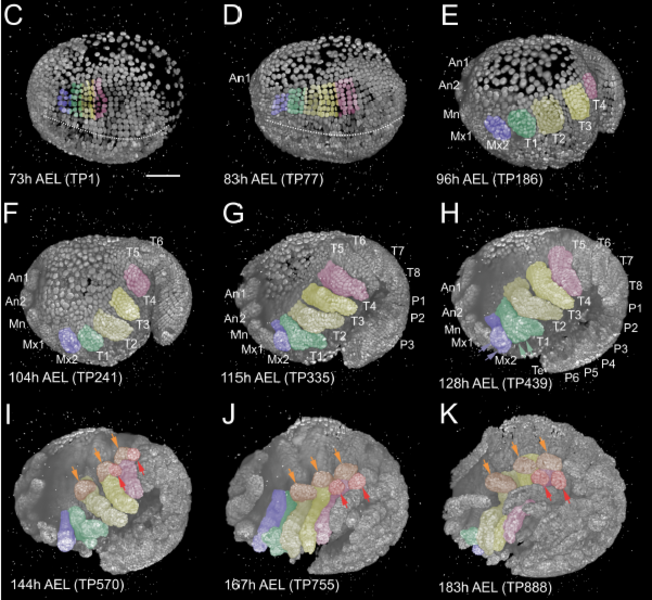Airyscan detection in multiphoton microscopy: super-resolution and improved signal-to-noise ratio beyond the confocal limit
Joseph Huff1*, Ingo Kleppe1, Angela Naumann2,3 and Roland Nitschke2,3 Nature Methods, 2018
https://www.nature.com/articles/d42473-018-00102-3
Download PDF version
The penetration depth of traditional confocal laser-scanning microscopy (LSM) systems is limited by light scattering. To avoid these limitations, multiphoton LSM uses a nonlinear fluorophore excitation process in combination with a non-descanned detection concept to greatly increase the penetration depth. However, in traditional multiphoton LSM, this increased depth necessitates a compromise on the achievable spatial resolution and signal-to-noise compared with that of confocal LSM. The novel Airyscan detection concept from ZEISS, used in combination with multiphoton excitation, overcomes these limitations and provides increased resolution and signal-to-noise with a 2–3× increase in penetration depth compared with that of traditional confocal LSM.

Tridimensional Visualization and Analysis of Early Human Development
Belle et al, 2017
https://www.ncbi.nlm.nih.gov/pubmed/28340341
The authors provide an initial look at dynamic processes during early human development through 3D cellular imaging using light sheet microscopy.

Multi-view light-sheet imaging and tracking with the MaMuT software reveals the cell lineage of a direct developing arthropod limb
Wolff et al, 2018, eLIFE
https://www.ncbi.nlm.nih.gov/pubmed/29595475
The authors imaged fluorescently-labeled Parhyale hawaiensis embryos using multi-view light-sheet microscopy to study the cellular basis of limb development.


